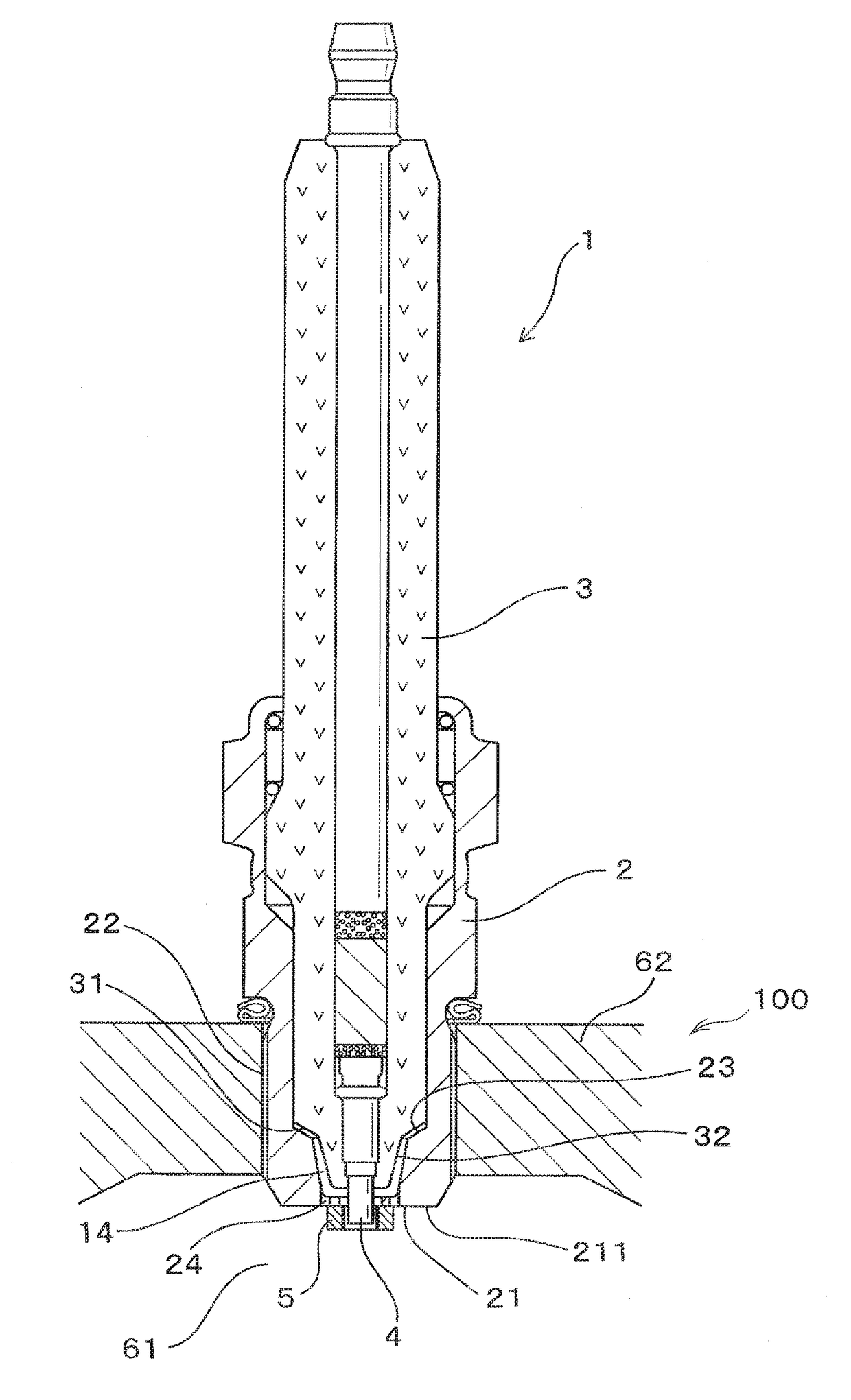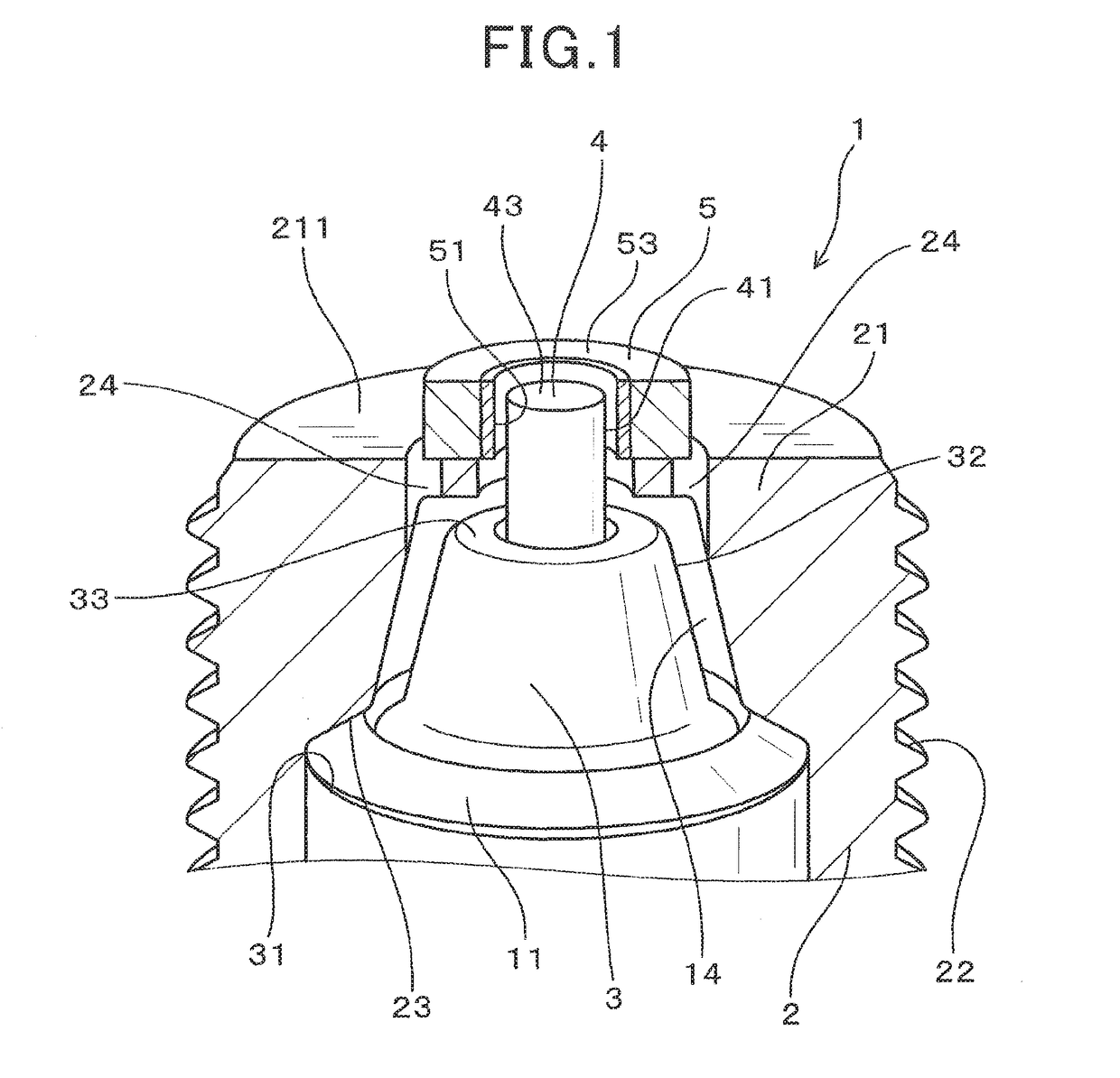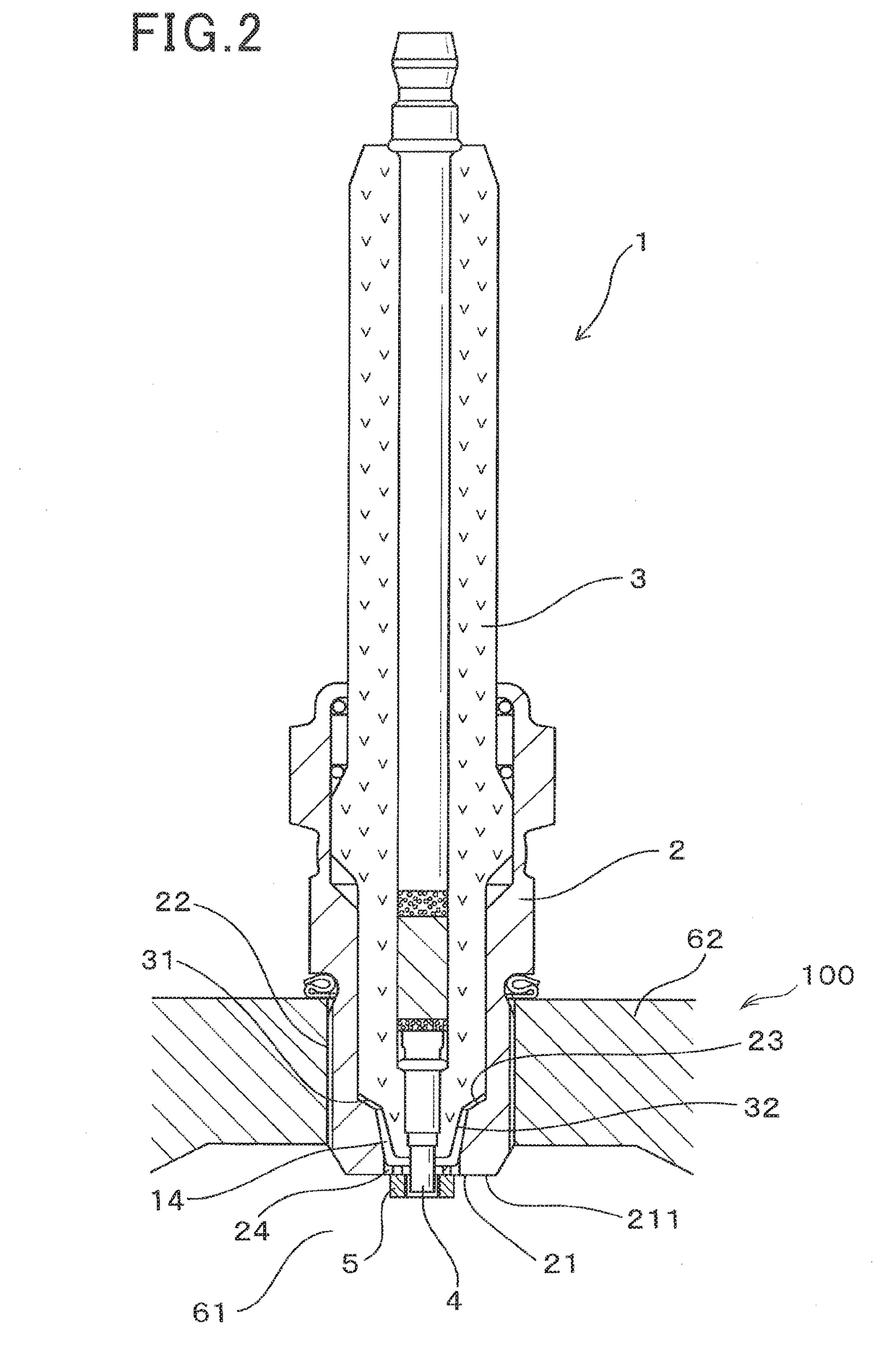Spark plug for internal combustion engine
a technology for internal combustion engines and spark plugs, which is applied to spark plugs, engine components, electrical appliances, etc., can solve the problems of increased mechanical wear of parts, and increased heat dissipation paths between the inner peripheral surface of the ground electrode, so as to shorten the heat dissipation paths and enhance the release of heat. , the effect of large contact area
- Summary
- Abstract
- Description
- Claims
- Application Information
AI Technical Summary
Benefits of technology
Problems solved by technology
Method used
Image
Examples
first embodiment
[0054]The spark plug 1 for use with an internal combustion engine and a production method thereof will be described below with reference to FIGS. 1 to 7.
[0055]The spark plug 1 of the first embodiment, as illustrated in FIGS. 1 to 4, includes a hollow cylindrical housing 2 (also called a shell), a cylindrical porcelain insulator 3, a center electrode 4, and an annular ground electrode 5.
[0056]The housing 4 is installed in the internal combustion engine 100 with a front end (i.e., a head) thereof exposed to a combustion chamber 61 of the internal combustion engine 100. The porcelain insulator 3 is retained inside the housing 2. The center electrode 4 is retained inside the porcelain insulator 3 and partially projects from a front end of the porcelain insulator 3. The annular ground electrode 5 is secured to the front end of the housing 2.
[0057]The housing 2 has a small-diameter portion 21 formed on the front end of the housing 2. The small-diameter portion 21 has an inner diameter D4 ...
second embodiment
[0082]The spark plug 1 of this embodiment, as illustrated in FIGS. 8 to 10, has an annular weld 13 which welds the housing 2 and the ground electrode 5 together. The annular weld 13 is shaped to occupy a portion of a width of the ground electrode 5 which extends in the plug circumferential direction.
[0083]Specifically, the front end surface 211 of the small-diameter portion 21 faces a base end surface 52 of the ground electrode 5 through an annular boundary 12. The annular boundary 12 has an annular region which occupies a portion of a width thereof and fully extends in a circumferential direction thereof and in which the annular weld 13 is formed. The annular weld 13, as illustrated in FIG. 10, continuously extends in the circumferential direction of the annular boundary 12. The air vents 24 are, as can be seen in FIGS. 10 to 12, located outside the annular weld 13 in the plug radial direction.
[0084]The annular weld 13 has an inner circumferential edge 132 located outside the inner...
third embodiment
[0104]The spark plug 1 of this embodiment, as illustrated in FIGS. 15 and 16, have the vent holes 24 each of which is geometrically inclined at a given angle (except 0° and 90°) to the plug axial direction.
[0105]Specifically, each of the air vents 24, as can be seen in FIG. 16, extends upwardly and outwardly from the base end to the front end thereof. Each of the air vents 24, as clearly illustrated in FIG. 15, has the opening 241 which is fully located outside the outer circumference of the ground electrode 5. In other words, an inscribed circle which passes through outermost points of all the openings 241 is positioned outside the outer circumference of the ground electrode 5, as viewed in the plug axial direction.
[0106]Other arrangements are identical with those in the first embodiment.
[0107]The spark plug 1 of this embodiment is designed to have the air vents 24 with the openings 241 which are not closed by the ground electrode 5 at all, thus improving the ability of the spark p...
PUM
 Login to View More
Login to View More Abstract
Description
Claims
Application Information
 Login to View More
Login to View More - R&D
- Intellectual Property
- Life Sciences
- Materials
- Tech Scout
- Unparalleled Data Quality
- Higher Quality Content
- 60% Fewer Hallucinations
Browse by: Latest US Patents, China's latest patents, Technical Efficacy Thesaurus, Application Domain, Technology Topic, Popular Technical Reports.
© 2025 PatSnap. All rights reserved.Legal|Privacy policy|Modern Slavery Act Transparency Statement|Sitemap|About US| Contact US: help@patsnap.com



